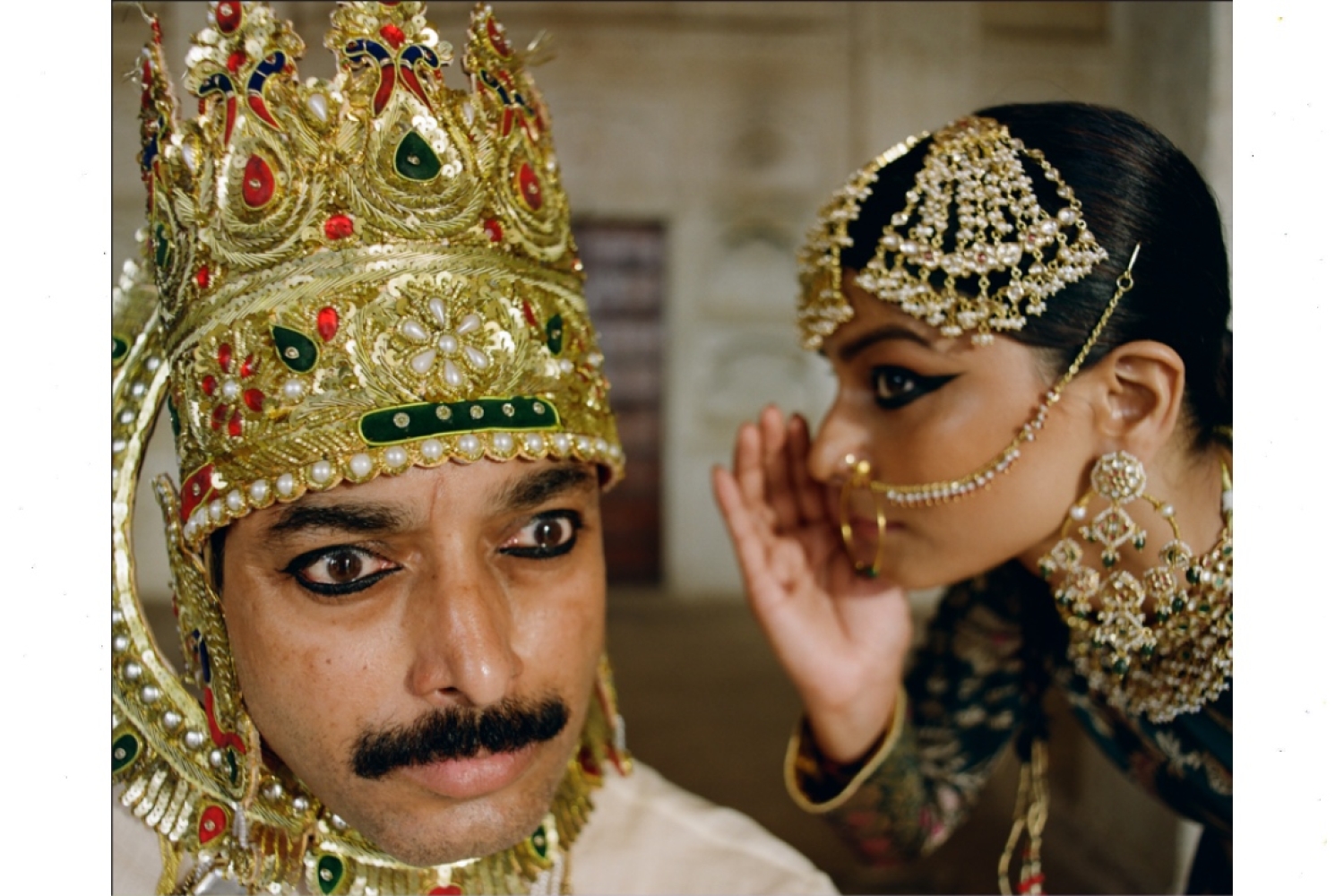

Raw Mango’s new collection is about the joy of festivities. The beautiful memories that come with it, and the colours. It also finds inspiration in history and architecture — subjects that intrigue Sanjay Garg the most. With deep knowledge of both, Sanjay has created this body of work around Mughal and Rajputana architecture, that speak of Ganga-Jamuni Tehzeeb and Miniature paintings. This conversation with him also lent us some insight into his love for theater. How performance is also one of his most favourite forms of art. Excerpts below.
How do you think your design philosophy and sensibility have evolved over the years?
India is a country of storytellers, we have so much to say. But I think more than evolving, consistency is important. Like we still think we haven’t even started, and that's fine. I'm still excited to explore more textiles, more campaigns, more different ways of map reading. I never liked Fashion Week, and we did only four shows. Now we are doing everything on Instagram, so the matter of even communicating has changed. I think the soul hasn’t changed, but you can still have multiple way of showing things that are real. So, there is a constant dialogue with the community as well.
Can you take us through your initial thoughts for the new collection?
I think this started from the Awadh region. Awadh is a place in Uttar Pradesh. The whole inspiration has been the architecture of the region. You can see the usage of bold and big motifs in the collection. There is a great use of gold and silver zari. While working on the collection, we also realised that there is a beautiful story of Ganga-Jamuni Tehzeeb. The whole ‘pehle aap pehle aap’ culture.
Could you talk a little about the colour palette that you've used for this collection?
Very ornamented jewel tone. Vivid colours, with a lot of gold and silver, like a midnight blue, beautiful peacock green. A little saturation but deep colours. Very toned down.
What was your creative process behind creating this collection?
There was a lot of research that has gone into it. For instance, it was very interesting to do research on theater in India for the fashion film we made around the collection. I myself went to Chandni Chowk and Varanasi, and many other different places. We discovered and studied the whole theater part of it.
We had to have a story, so it was a long process, and then we also wanted a dancer—professional Kathak Dancer. There are only two models in the film. But everyone else is actually just a professional dancer, or NSD theater artist. We shot at a beautiful fort, which has history of Mughals and Rajputs. The music is done by Stefan. It took fifteen days just to create the music. I gave him so many notes purely because it is so difficult to explain what classical music means to one person. I wanted it to be very deep Indian classical music. The story has been directed by many artists in the past, a film has also been made in Bollywood on it, so this is our interpretation. I am very excited about this, almost like a kid. I say this to everyone — we need to own it to feel tied to a work, and we need to be so overwhelmed with excitement that it translates into the work.
What is your favourite memory of festivals growing up?
I think in the village, the biggest festival for us was Holi. And Diwali of course with all its fire crackers. I've been part of theater and that is why I can relate to it so much. We did plays in the village. After school, we used to go to a community building to sleep and practice the play, and then we used to perform it in the village.
Are you working on anything else on the side?
Yes, we are working on multiple things. We’ve been working very hard on our Chennai store. With the store, we’ve tried to explore architecture and history again. Subjects that I love. And of course, we're working with different collections, so let's see what happens. We’re always working with two or more things on the side. I was busy with the store for at least six months. I was very busy and I really enjoyed that. What truly really excites me are the blurring lines of art. And also what India was before. I don't really understand the idea of the fashion and parties. I think the world has gone beyond that.
Text Hansika Lohani Mehtani
Date 21-10-2022